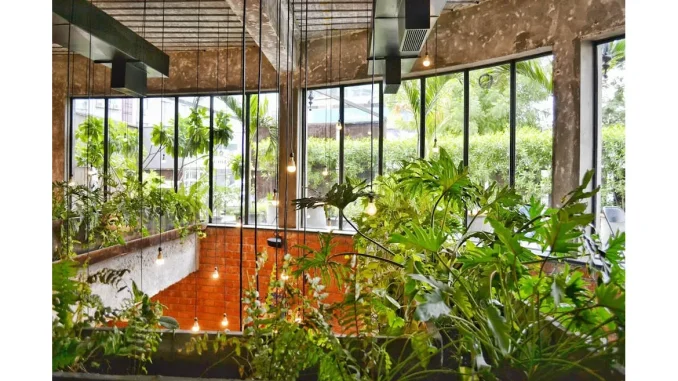
Located in the charming Walthamstow Village, one of London’s most coveted residential enclaves, The Arbour exemplifies a groundbreaking approach to sustainable urban development. This forward-thinking housing initiative consists of ten contemporary, spacious homes, each meticulously crafted to maintain a carbon-negative footprint throughout their lifecycle. Situated near Walthamstow Central station, The Arbour not only prioritises environmental stewardship but also establishes new benchmarks for security, earning high praise at the Secured by Design (SBD) ATLAS awards.
The path to making The Arbour a model of sustainable and secure living was anything but simple. It demanded a collaborative, multifaceted strategy that melded advanced environmental design with robust security measures. Central to this effort was an alliance with Designing Out Crime Officers (DOCOs) from the Metropolitan Police. The unique carbon-negative and zero-waste design of The Arbour presented specific challenges that required customised security enhancements. Matthew Fletcher, a DOCO involved in the project, remarked, “It has been a pleasure to work with the architects and developers to ensure a security-conscious scheme even with unique site-specific requirements.”
This collaborative endeavour also involved integrating products from SBD member companies such as Arbor-Fenex Windows, CAME Entrotec, and The Safety Letter Box Company. These products met stringent security criteria without compromising the development’s environmental objectives. As a result, The Arbour achieved SBD certification, demonstrating that sustainability and security can coexist harmoniously.
Developers Gs8 faced the dual challenge of meeting ambitious environmental targets while addressing the site’s history of crime. “Matthew was proactive and helped us find solutions that enabled us to meet the requirements of SBD while being able to deliver on our carbon, waste, and energy targets for the development,” noted a spokesperson from Gs8. Architects Boehm Lynas echoed this sentiment, emphasising the importance of residents’ safety and security in community-led design. “Our engagement with SBD from an early stage helped to achieve this, and we are pleased the outcome was a successful one,” they stated.
The success of The Arbour carries significant implications for urban development across the UK. SBD awards recognise developments that incorporate crime prevention measures across various sectors, including residential, education, health, and commercial. These accolades are not merely ceremonial; they serve as evidence to fulfil third-party obligations under specific building regulations in England, Scotland, and Wales. DOCOs play a crucial role in this process, offering guidance from the planning stages through to project completion. They collaborate with architects, developers, and local authority planners to “design out” crimes such as burglary and anti-social behaviour (ASB). By advising on aspects such as street lighting, building layout, and security standards for doors and windows, DOCOs help create environments where residents feel safe and secure.
SBD has produced a series of authoritative Design Guides to assist the building, design, and construction industry in integrating security into developments. These guides, available for free download on the SBD website, are continually updated to reflect evolving criminal behaviours and advancements in building design and technology. They serve as invaluable references for architects, developers, self-builders, local authority planners, and police officers.
The narrative of The Arbour highlights the potential for urban developments to achieve high standards of sustainability and security simultaneously. The collaboration between developers, architects, and DOCOs is a testament to the power of integrated planning. This project illustrates that environmentally conscious developments can meet stringent security requirements, challenging the traditional notion that sustainability and security are mutually exclusive. The use of products from SBD member companies underscores the importance of industry collaboration in achieving these goals. By setting a precedent for future developments, The Arbour serves as a model for how urban housing can evolve to meet the dual demands of environmental responsibility and resident safety.
Looking ahead, the success of The Arbour paves the way for more carbon-negative and secure housing developments. As urban areas continue to expand, the need for sustainable and safe housing becomes increasingly critical. Future projects can draw on the lessons learned from The Arbour, particularly the importance of early and ongoing collaboration with DOCOs. Moreover, advancements in building technology and materials are likely to lead to even more innovative solutions for integrating sustainability and security. As the building industry continues to evolve, the principles demonstrated by The Arbour will serve as a benchmark for future developments, driving a new era of environmentally responsible and secure urban living.
The integration of smart technologies into housing developments could further enhance security while maintaining sustainability. For instance, smart lighting and surveillance systems powered by renewable energy sources could provide additional layers of safety without increasing the carbon footprint. The recognition of The Arbour at the SBD ATLAS awards is not just an accolade for a single project but a beacon for the future of urban development. It exemplifies how thoughtful design, industry collaboration, and a commitment to sustainability can redefine the landscape of urban living, making it safer and more environmentally friendly for generations to come.
The Arbour stands as a shining example of what can be achieved when innovative environmental solutions are combined with an unwavering commitment to security. Its success is a clarion call to developers, architects, and planners worldwide: sustainable and secure urban living is not just an aspiration but an attainable reality. As cities continue to expand and evolve, the lessons learned from The Arbour will undoubtedly shape the future of urban development, guiding it towards a more sustainable and secure tomorrow.


Be the first to comment